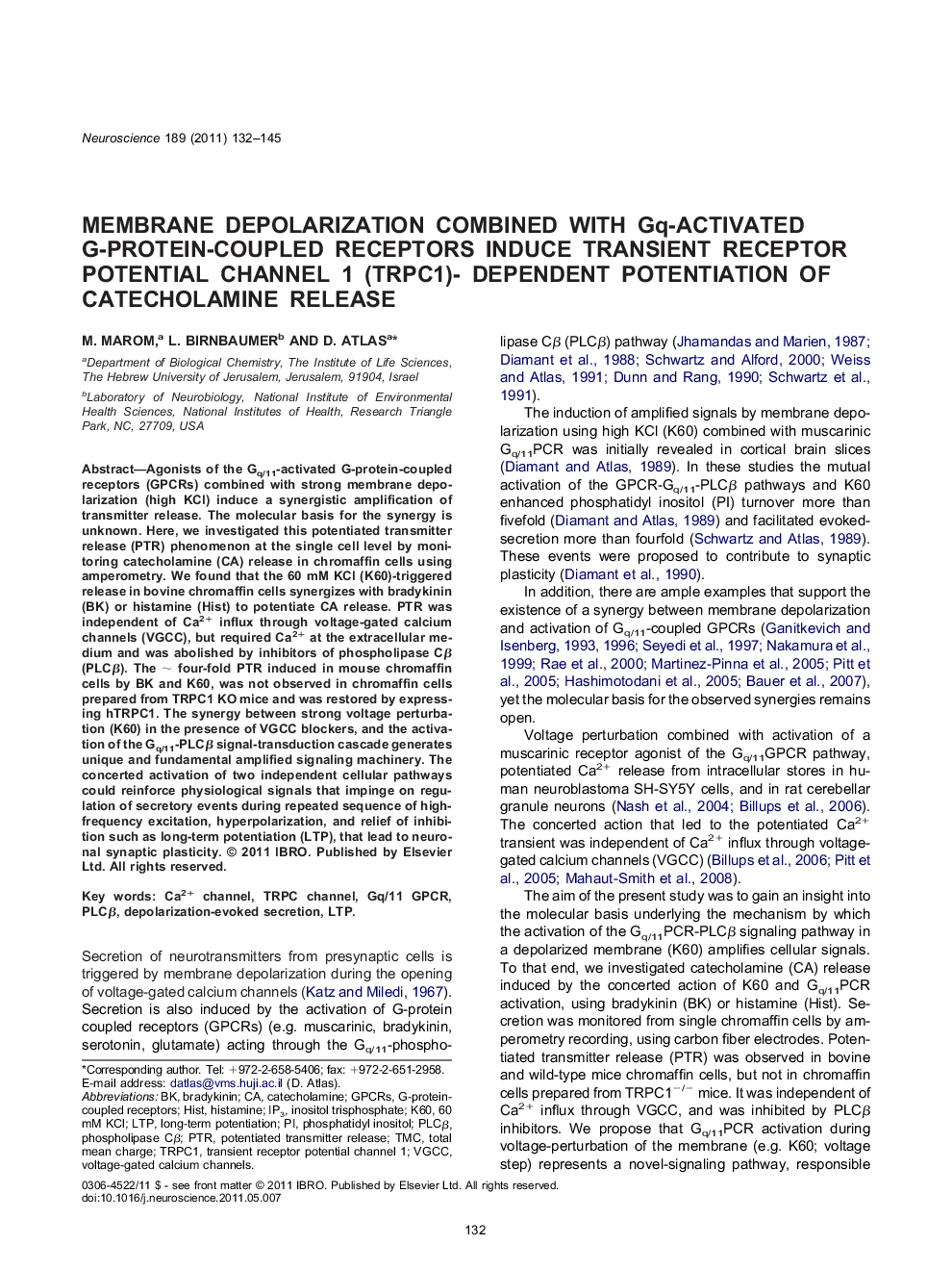| کد مقاله | کد نشریه | سال انتشار | مقاله انگلیسی | نسخه تمام متن |
|---|---|---|---|---|
| 6276345 | 1614887 | 2011 | 14 صفحه PDF | دانلود رایگان |

Agonists of the Gq/11-activated G-protein-coupled receptors (GPCRs) combined with strong membrane depolarization (high KCl) induce a synergistic amplification of transmitter release. The molecular basis for the synergy is unknown. Here, we investigated this potentiated transmitter release (PTR) phenomenon at the single cell level by monitoring catecholamine (CA) release in chromaffin cells using amperometry. We found that the 60 mM KCl (K60)-triggered release in bovine chromaffin cells synergizes with bradykinin (BK) or histamine (Hist) to potentiate CA release. PTR was independent of Ca2+ influx through voltage-gated calcium channels (VGCC), but required Ca2+ at the extracellular medium and was abolished by inhibitors of phospholipase Cβ (PLCβ). The ⼠four-fold PTR induced in mouse chromaffin cells by BK and K60, was not observed in chromaffin cells prepared from TRPC1 KO mice and was restored by expressing hTRPC1. The synergy between strong voltage perturbation (K60) in the presence of VGCC blockers, and the activation of the Gq/11-PLCβ signal-transduction cascade generates unique and fundamental amplified signaling machinery. The concerted activation of two independent cellular pathways could reinforce physiological signals that impinge on regulation of secretory events during repeated sequence of high-frequency excitation, hyperpolarization, and relief of inhibition such as long-term potentiation (LTP), that lead to neuronal synaptic plasticity.
Graphical Abstract
-
-
- 106Highlightsâ¶Membrane depolarization combined with Gq/11PCR activation generates potentiation of transmitter release (PTR). â¶PTR is independent of Ca2+ entry via voltage-gated-calcium channels. â¶Amplified PIP2 turnover is required for PTR. â¶PTR is absent in chromaffin cells prepared form TRPC1 KO mice and restored by hTRPC1. â¶A unique signaling pathway generated by concerted Gq/11PCR activation and membrane depolarization underlies some of the molecular aspects of LTP.
Journal: Neuroscience - Volume 189, 25 August 2011, Pages 132-145